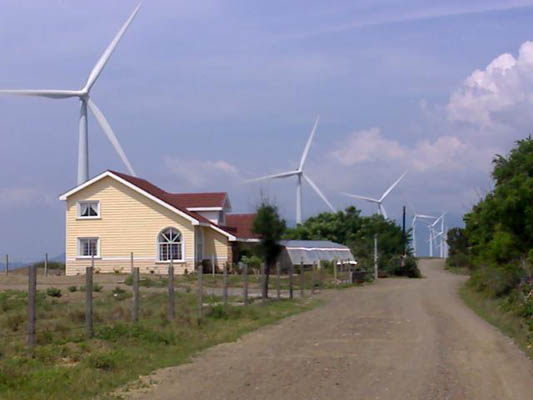
Dennis Posadas
Back in the late 1950’s when Bangui barrio folks like me still used the kingki (kerosene wicker lamp), or if you’re fortunate with some extra money, a Coleman gas lamp, to light the darkness, one of my aunts in Bangui went to Manila for the first time, stayed there for about a week. When she came back home to Bangui where we didn’t have any electricity at the time (except, for instance, that huge lightning volt that killed my brother’s carabao instantly during a wicked thunderstorm one night in late summer), she and a bunch of neighbors were huddled around a bonfire of dried rice stalks one early cold morning when I distinctly heard my aunt, as she sucked one last gasp of smoke from her almost completely burnt out tobacco, ruefully said: “‘Tay la coma silaw a kinulding…” She was, of course, referring to the incandescent electric light bulb she saw in Tata Justo (Jose, Sr.) Padre’s house in Manila which she only had to flick the switch with her finger to turn it on or off.
Well, residents of Bangui eventually got the “silaw a kinulding” sometime in the late 60s and early 70s. And to top it all, Banguinians are the first in the entire Philippines to have windmills along their shoreline to harness the awesome winds blowing in from the South China Sea and converting same into electricity which is pumped into the power grid. And, of course, now the townsfolk can enjoy the benefits of a host of electric appliances and gadgets, such as refrigerators, electric fans, televisions, washing machines, stereos, computers, etc.

Solar Desk Fan
Now, if Dennis Posadas, former Intel engineer/analyst, prolific information technology author, columnist, blogger, and who is currently the Deputy Executive Director of the Philippines’ Congressional Commission on Science & Technology and Engineering, had his way, he would also have all those appliances and then some operated for FREE or almost FREE using solar power. In “How the Philippines Can Be a Solar Power“, Posadas writes: “The Philippines semiconductor and electronics industry, working closely with local universities, industries, and investors, can offer significant opportunities for innovation, particularly in solar energy applications development and manufacturing-process reengineering and optimization.”
The website home-solar-systems.com lists some of the most commonly used residential solar power applications. Such technology utilizes the heat coming from the sun for heating spaces and water. It can also be used for cooling spaces, ventilation, desalination, cooking and many other purposes.
 The list of uses of solar power includes: calculators with a small solar cell, solar battery chargers to recharge cell phones, Ipods, laptop computers and other small devices, solar panels known also as photovoltaic cells that transform the sun’s energy to electricity. The more common use of solar power is of the residential variety–providing electricity for homes. In the latter case, solar panels are installed on the roof (photo at left) or on the ground and the electricity produced feeds a battery bank and an inverter providing 110 or 220 volts for the home. Other popular solar devices using solar technology are solar lights, solar fountains, solar pumps, solar refrigerators (ama, nalamlamuyot ngata ti ayus tay impalamiis a basi!), solar water heaters and solar fans. These products are now widely available and are a good example on how solar energy can be utilized to cut energy costs.
The list of uses of solar power includes: calculators with a small solar cell, solar battery chargers to recharge cell phones, Ipods, laptop computers and other small devices, solar panels known also as photovoltaic cells that transform the sun’s energy to electricity. The more common use of solar power is of the residential variety–providing electricity for homes. In the latter case, solar panels are installed on the roof (photo at left) or on the ground and the electricity produced feeds a battery bank and an inverter providing 110 or 220 volts for the home. Other popular solar devices using solar technology are solar lights, solar fountains, solar pumps, solar refrigerators (ama, nalamlamuyot ngata ti ayus tay impalamiis a basi!), solar water heaters and solar fans. These products are now widely available and are a good example on how solar energy can be utilized to cut energy costs.
Ay wen, Ikit, dimo coma masapul ti mangipaburec iti danum a pangpatay ti lamiis diay nacabatia a pagbelnasmo. Wenno adda coma pagpaypaymo a paligpalig (solar fan) cadagiti calgaw a nadagaang. Ken nasaysayaat nga amang ta awan baybayadam nga electric bill no daydiay coma solar light ti usarem a silaw a kinulding.


 According to the NorthWind Power Development Corporation which oversees the windmills, “the production of clean energy in the town of Bangui is an example for the world to see. For visitors and the local community—not to mention the international community—the sight of the wind turbines serves to raise awareness on the need for environmentally sound practices. We need green technology, and the Bangui Bay Project shows that ‘going green’ can be a reality. This is green technology at its best.”
According to the NorthWind Power Development Corporation which oversees the windmills, “the production of clean energy in the town of Bangui is an example for the world to see. For visitors and the local community—not to mention the international community—the sight of the wind turbines serves to raise awareness on the need for environmentally sound practices. We need green technology, and the Bangui Bay Project shows that ‘going green’ can be a reality. This is green technology at its best.”